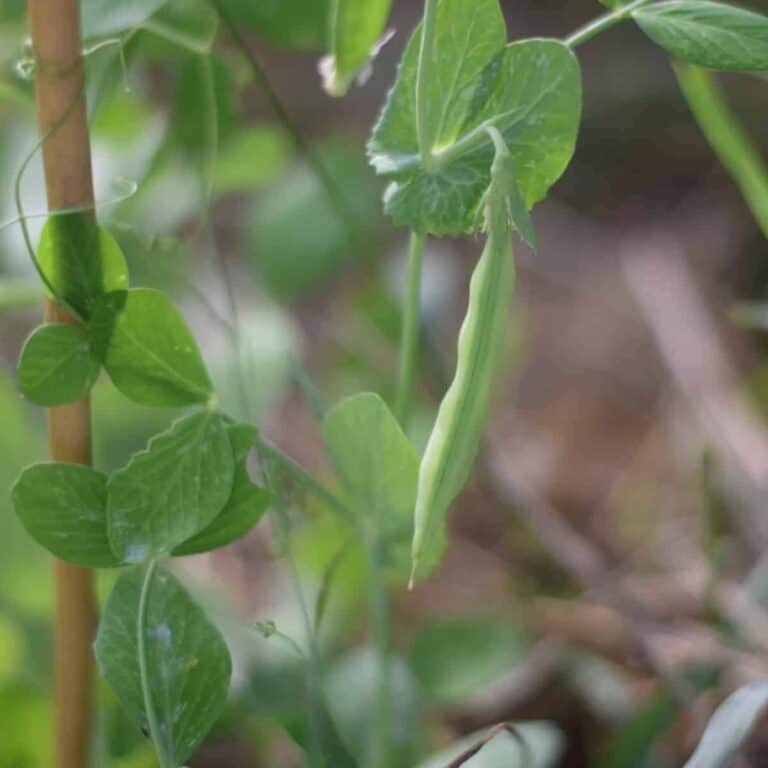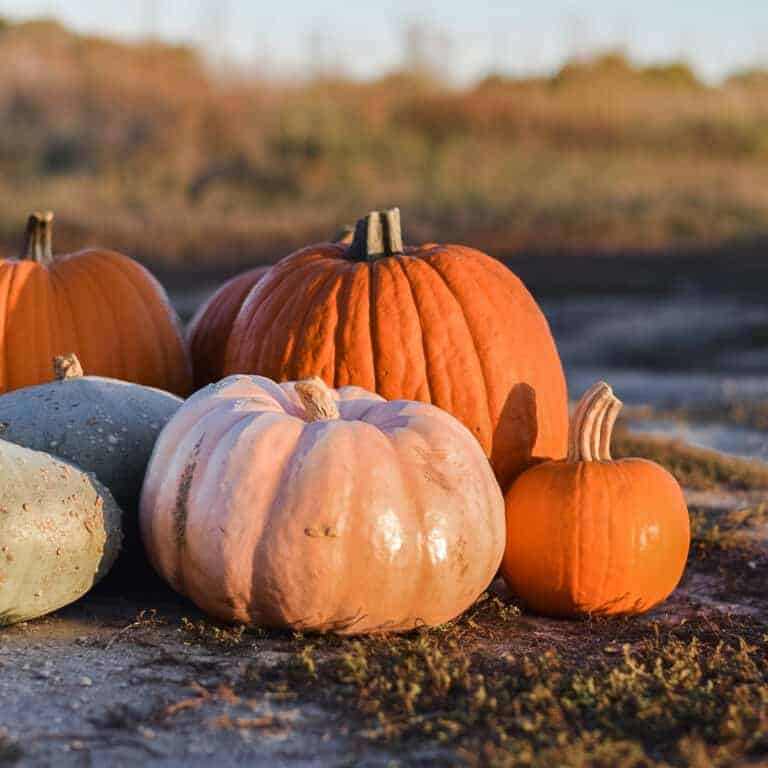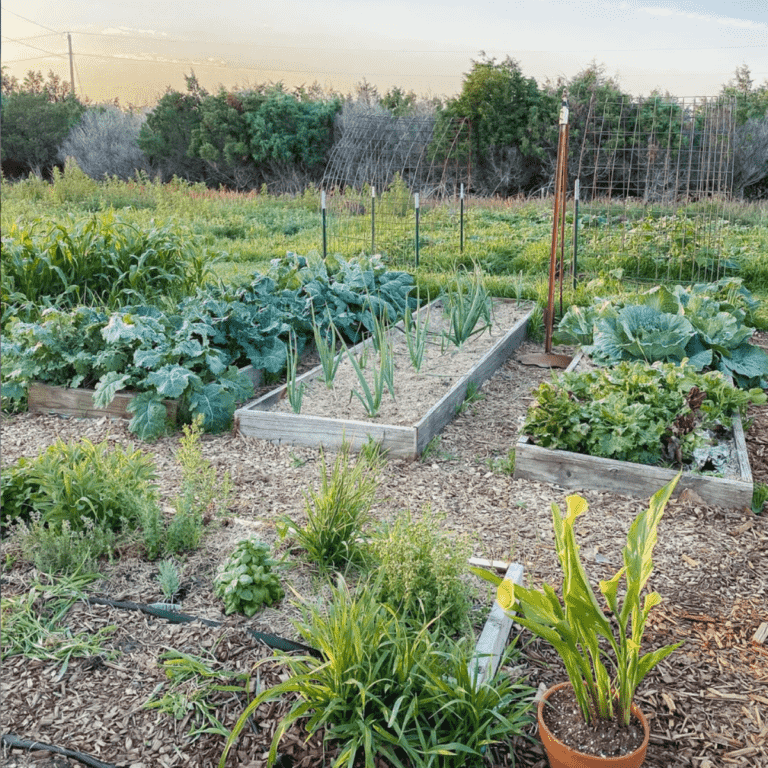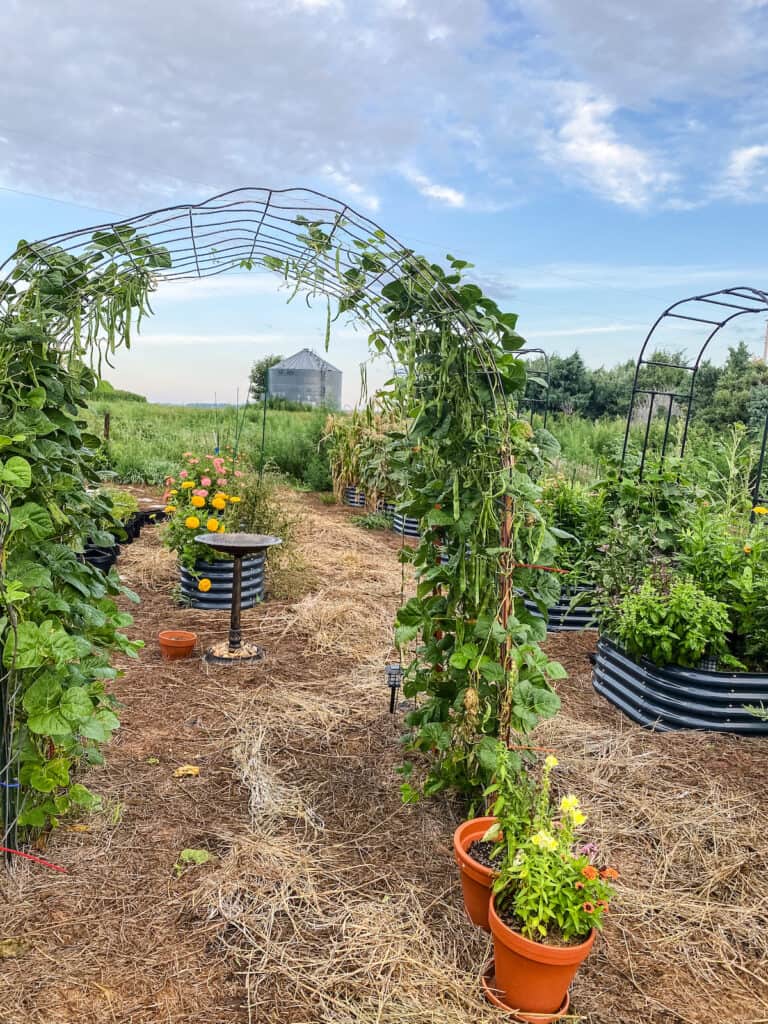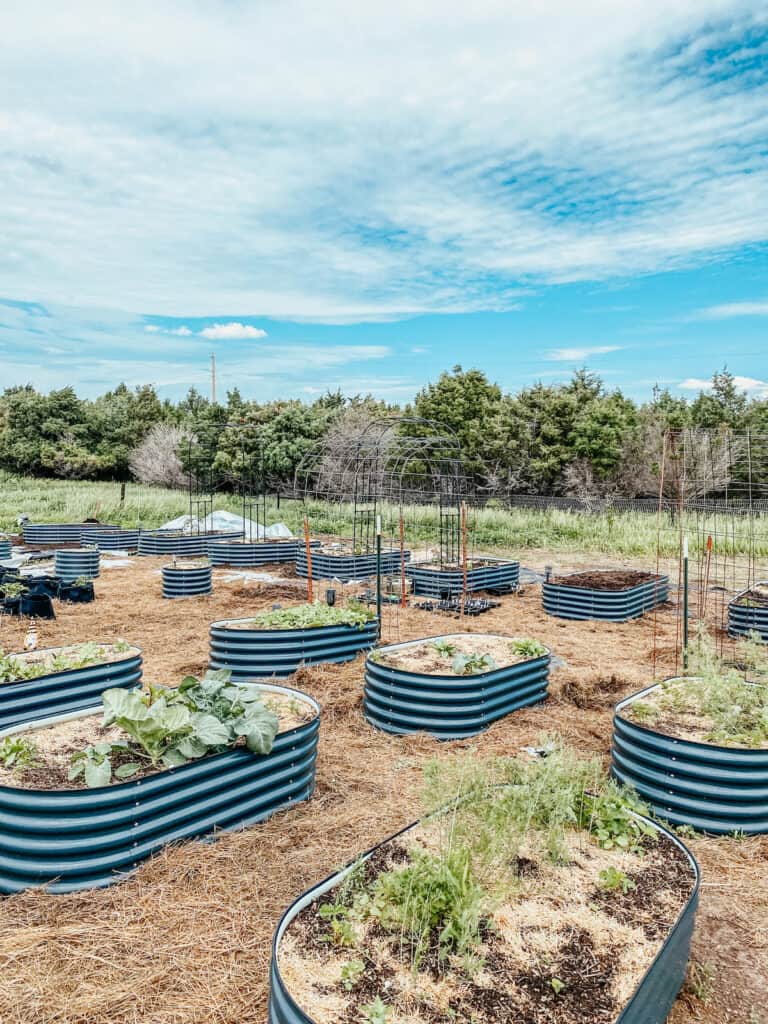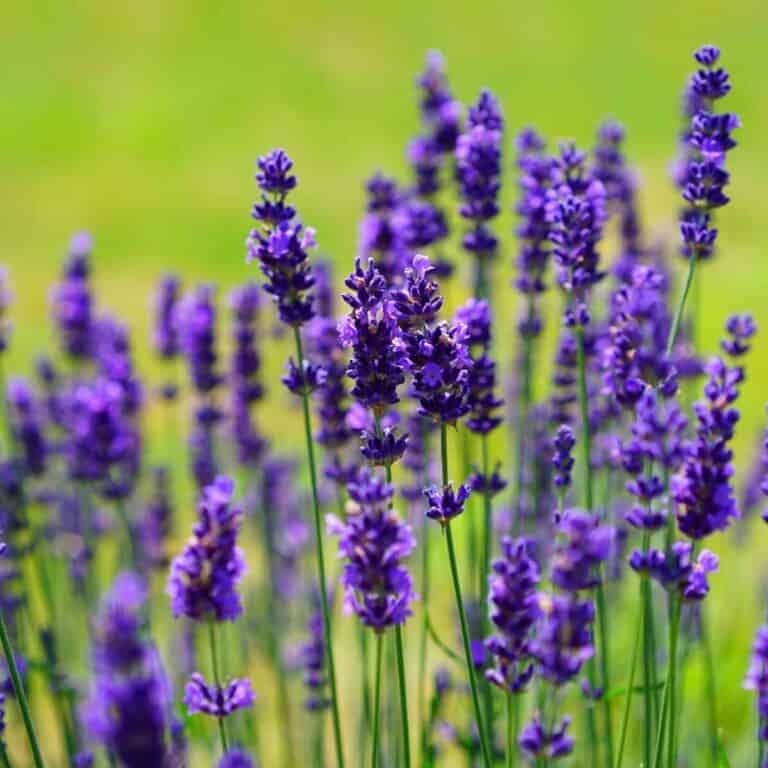How to Grow a Vegetable Garden (a guide for beginners)
Are you new to gardening? And looking for ideas for beginning your own home garden? I’m sharing vegetable gardening for beginners tips and resources to help you on your journey.
I know that when I started my first garden, I was a bit overwhelmed by all of the options and processes.
In this post, I’m sharing a few of lessons I’ve learned to help you get your garden started.
Remember, every garden is unique, and you’ll learn a lot through hands-on experience. Let’s dig in…
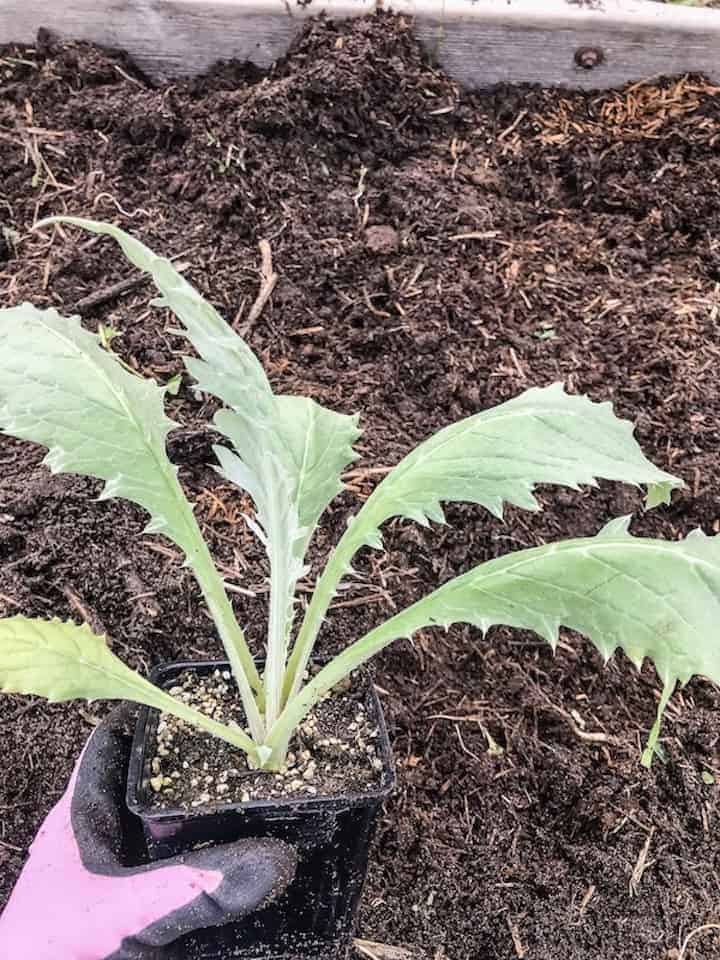
This post has been updated from the original publish date of May 10, 2020 to provide additional helpful information.
Vegetable Gardening for Beginners Tips
Starting a vegetable garden can be a rewarding and enjoyable experience. Here are some tips for beginner vegetable gardeners:
- Start Small: Begin with a small garden plot to manage and learn the basics. It’s easier to expand later if you feel comfortable and gain more hands on experience.
- Choose the Right Location: Select a sunny spot for your garden, as most vegetables need at least 6-8 hours of sunlight per day. Ensure good drainage to prevent waterlogging and preventing root rot.
- Soil Preparation: Invest time in preparing the soil. It should be well-draining, rich in organic matter, and have a slightly acidic to neutral pH. Consider getting a soil test done to understand its composition. A nice loamy soil will provide most vegetables a healthy life.
- Select Easy-to-Grow Vegetables: Start with vegetables that are relatively easy to grow, such as tomatoes, lettuce, radishes, and some herbs. They are forgiving and give beginners a good chance of success.
- Plan Your Garden Layout: Arrange your crops strategically, considering factors like plant height, sunlight requirements, and water needs. This helps optimize space and resources.
- Watering: Provide consistent and adequate watering. Mulching around plants helps retain moisture and suppress weeds. Water in the morning to reduce the risk of diseases.
- Learn About Companion Planting: Some plants thrive when planted together and can help each other by deterring pests or enhancing growth. Read more and research about companion planting to maximize your garden’s productivity.
- Use Quality Seeds and Plants: Purchase high-quality seeds and seedlings from reputable sources. This ensures that you start with healthy plants that have a better chance of thriving. Our favorite seed company is High Mowing Seeds. We’ve had the most success with this organic seed company!
- Practice Crop Rotation: To prevent soil-borne diseases and maintain soil fertility, rotate your crops each season. Avoid planting the same vegetables in the same spot year after year.
- Stay on Top of Weeds: Regular weeding is crucial to prevent competition for nutrients and water. Mulching can help control weeds and retain soil moisture. We love to use garden straw to help battle weeds and keep moisture for the plants.
- Monitor for Pests: Keep an eye out for signs of pests and diseases. Early detection allows for more effective control. Consider using natural methods like companion planting and introducing beneficial insects. And avoid using harmful pesticides.
- Be Patient: Gardening takes time, and not everything will be perfect from the start. Learn from your experiences, and don’t be discouraged by setbacks.
- Educate Yourself: Read gardening books, watch tutorials, and join online gardening communities. Learning from experienced gardeners and sharing your own experiences can be valuable.
- Enjoy the Process: Gardening is a journey. Take pleasure in watching your plants grow and savor the fruits of your labor. Don’t be afraid to experiment and have fun with it!
Gardening is very therapeutic to me. And after a long and dreary midwest winter, I get excited about starting a new garden each year.
If you’re a new gardener looking to start your own vegetable garden and to grow your own food. Or maybe one for stress relief, I have some great tips to help you get started.
These days many folks are looking into starting their own garden to grow food. In fact starting a victory garden is trending right now.
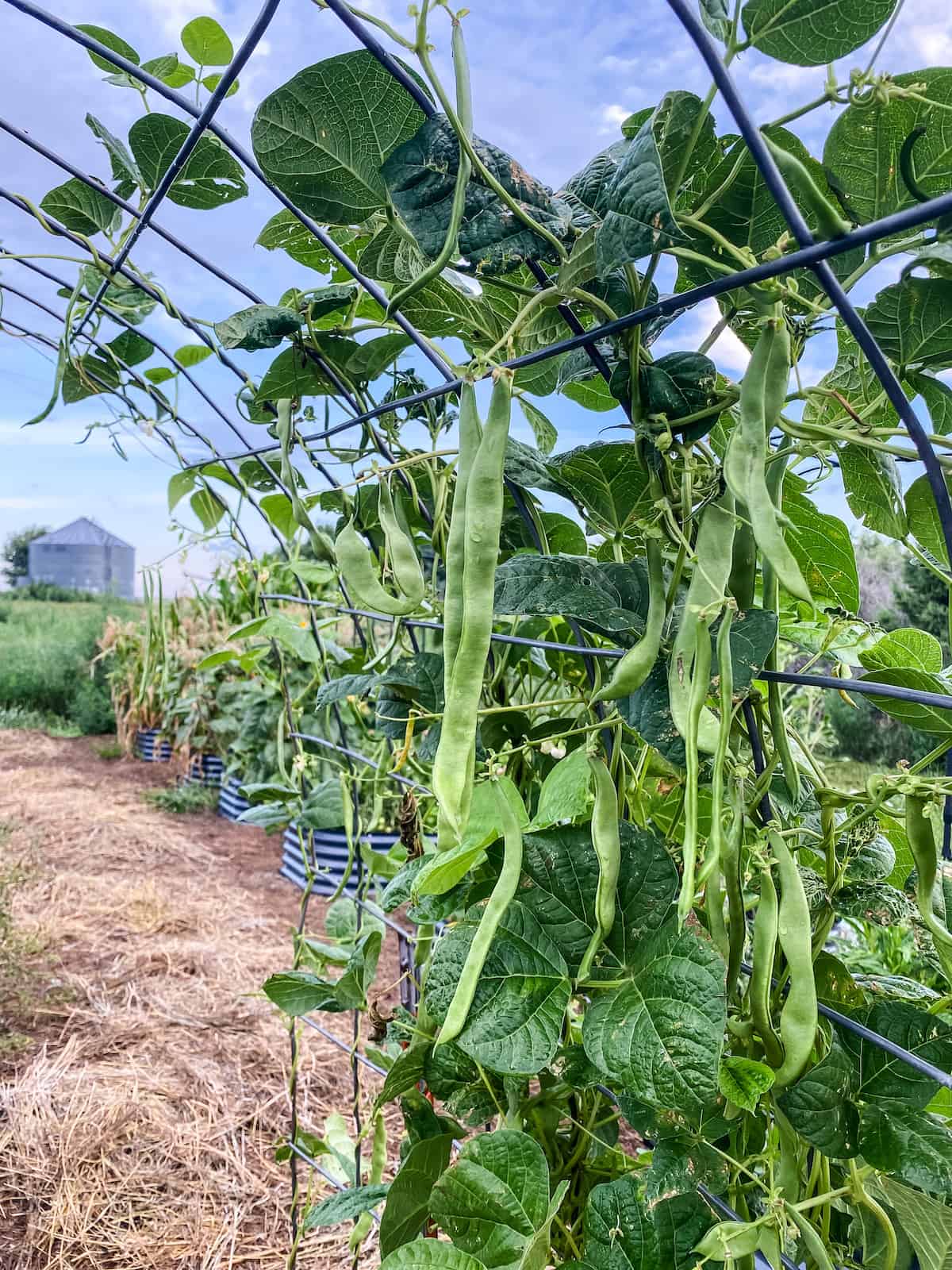
Know your Growing Zone
The very first step to starting your garden is to know your growing zone. This is very helpful to determining your first and last frost dates.
As well as determining how long of a growing season you have.
Why does this matter?
Once you have that information, you can start to plan out what will grow best in your particular zone. And it may take a bit of research when you’re brand new to gardening.
If you’re just starting out and want to grow a quick crop, check out a list of 10 fast growing vegetables.
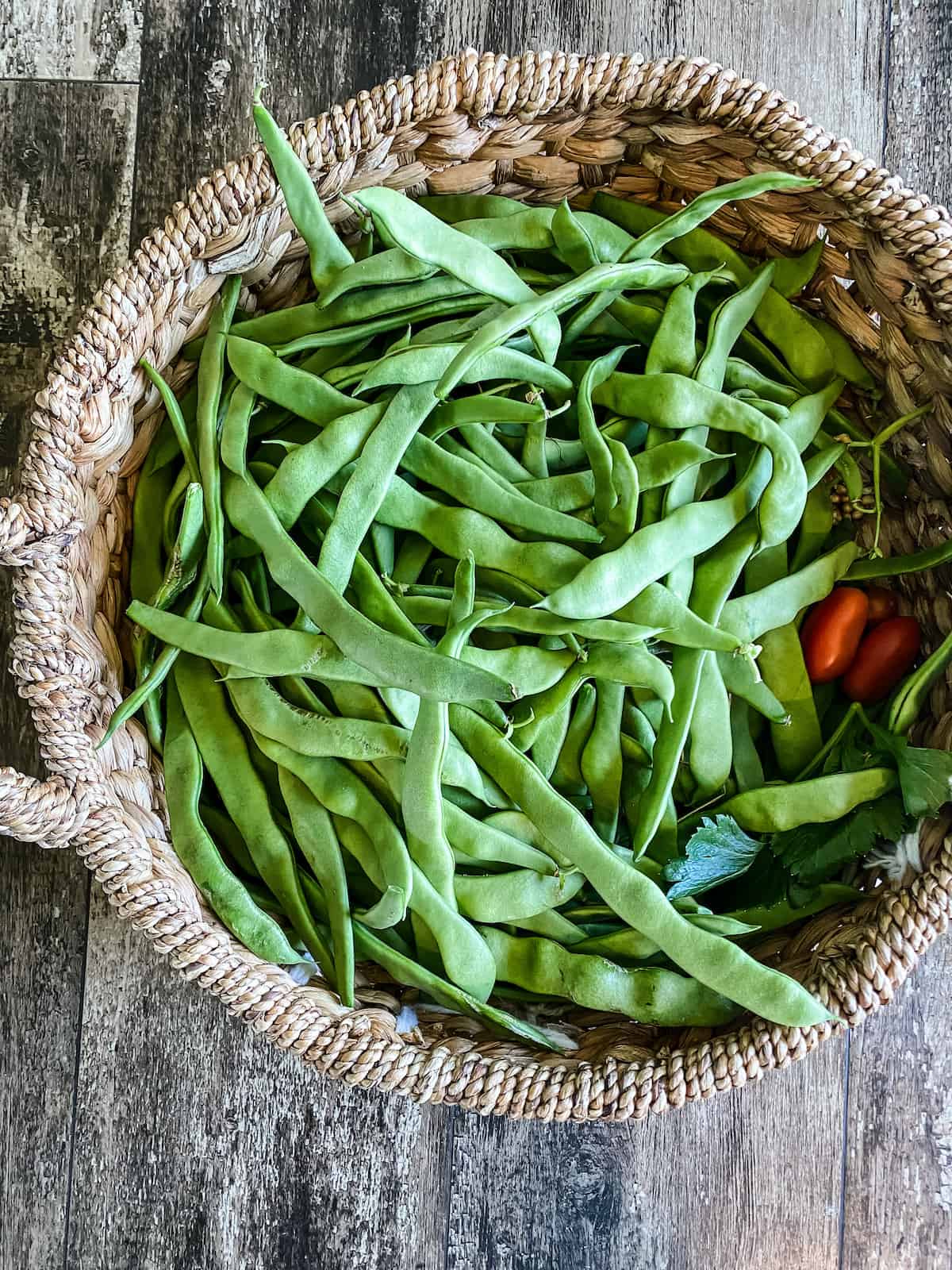
Be sure to check your seed packet for specific planting advice, spacing info, growing conditions, etc.
Start Small
I don’t know about you, but I tend to get a little ambitious when starting a new project.
But I have learned over the years to start small with gardening until I master growing particular garden vegetables. And from there, I add a little more. Eventually.
We are planning a year’s worth of vegetables in our garden based off of the family garden plan.
I know that sounds kind of intense. But, we are starting small. Beginning with the regular summer garden and adding a few more varieties with succession planting.
And then continuing with a fall garden. So, we are easing into this new process.
For reference, our first garden was just a simple garden plot. A few years later, my husband build 3 simple raised beds. Now, we are added a few metal raised beds each year to expand the garden areas slowly over time.
The images below show our first garden bed and where it was last year.
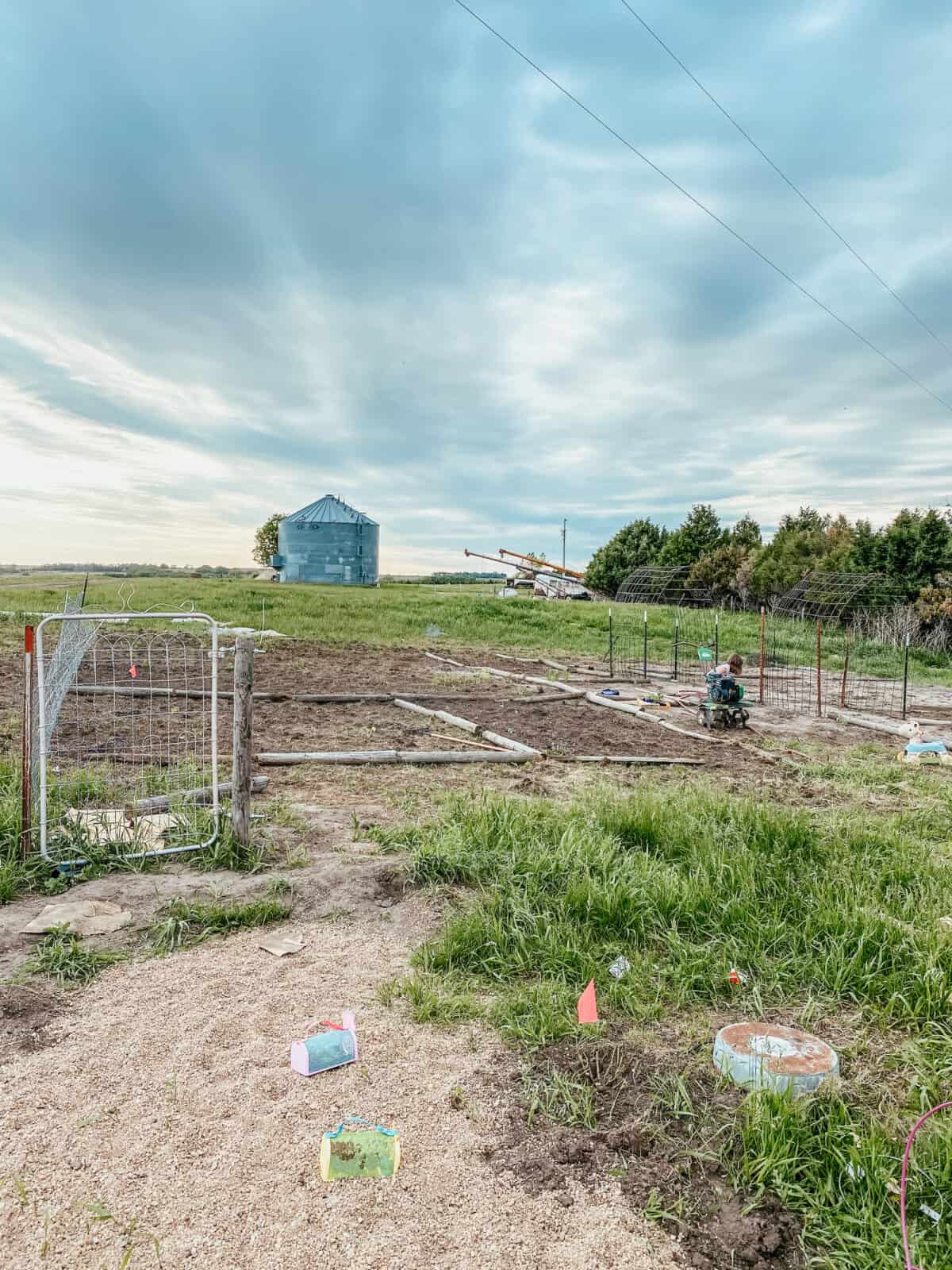

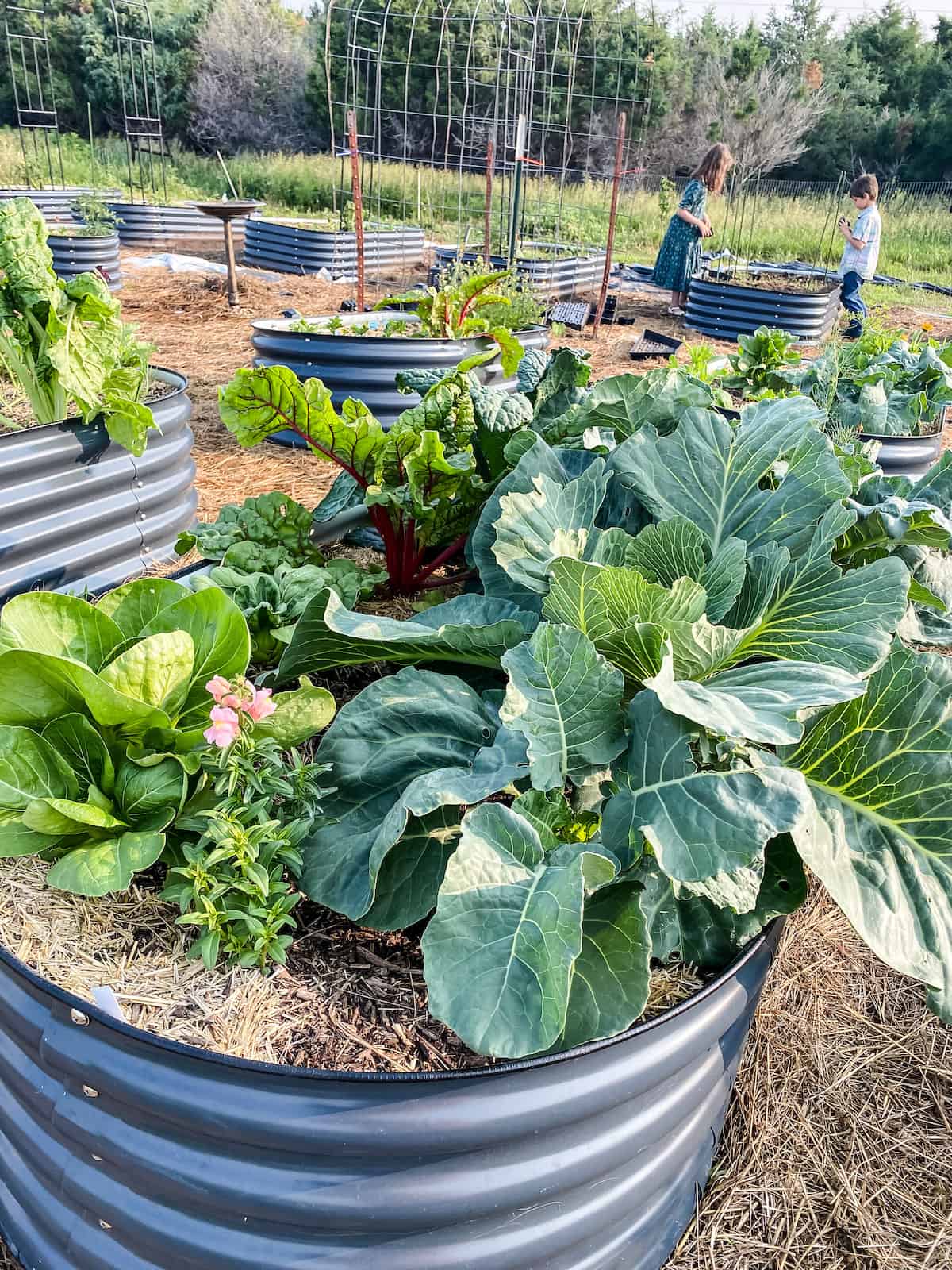
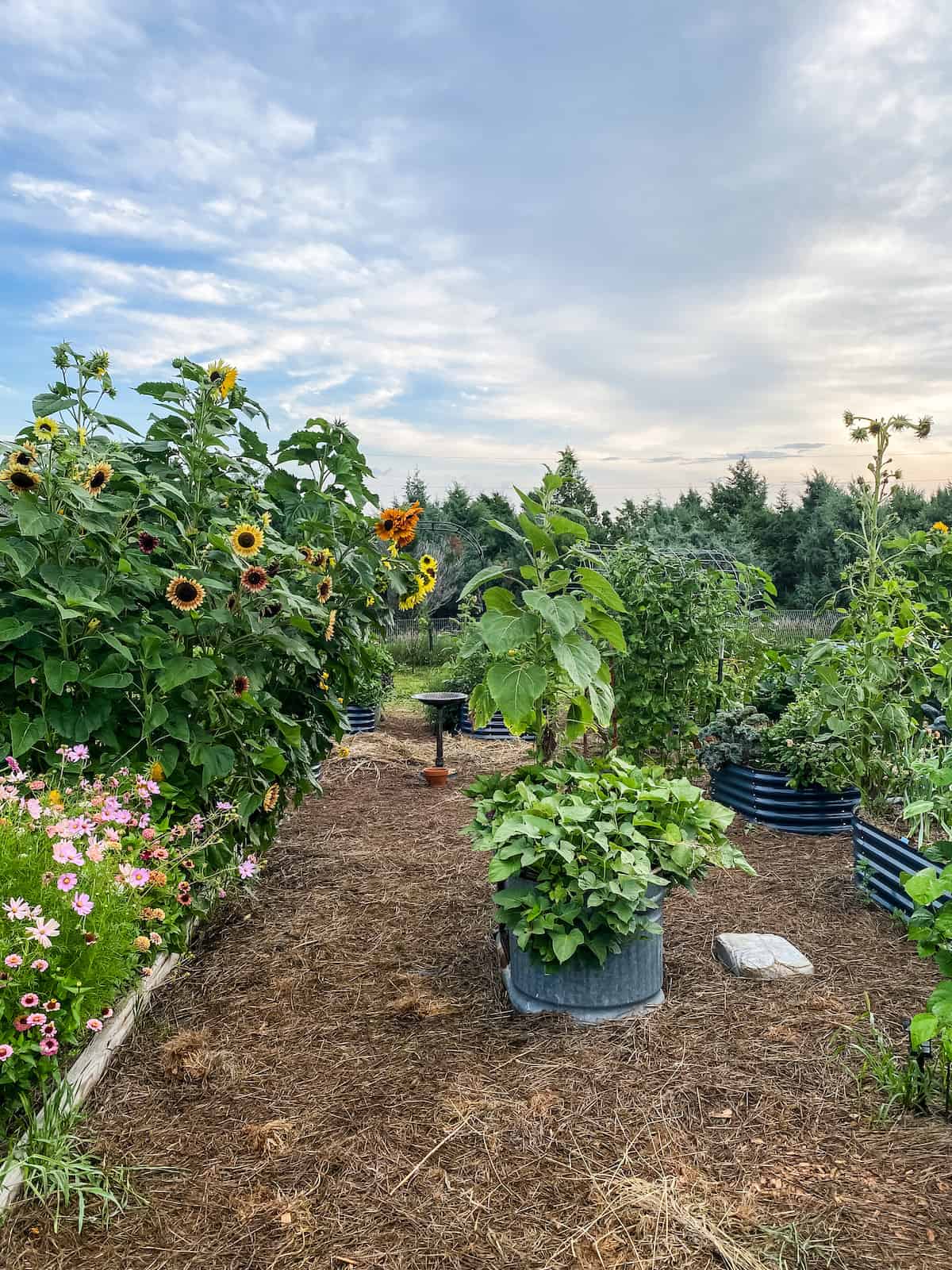
The point is to start small and not allow for overwhelm.
Starting an herb gardening for beginners is another great option when starting out!
Warm Season Crops vs Cool Season Crops
Warm season crops and cool season crops are two categories of plants that thrive in specific temperature ranges, influencing their growth patterns and cultivation timelines. Warm season crops, such as tomatoes, peppers, and melons, are well-suited for higher temperatures and longer daylight hours.
These crops typically require warmer soil for germination and thrive in the heat of late spring and summer. Warm season crops are sensitive to frost, making it essential to plant them after the last frost date in a given region.
The warm season provides these plants with optimal conditions for photosynthesis, leading to robust growth and successful fruiting. Examples of warm season crops also include corn, squash, and cucumbers, which require the heat to produce bountiful yields.
On the other hand, cool season crops are adapted to thrive in cooler temperatures characteristic of spring and fall. Examples of cool season crops include lettuce, spinach, and peas. These plants can withstand mild frosts and often grow best in temperatures ranging from 40 to 70 degrees Fahrenheit.
Cool season crops are typically planted in early spring or late summer to take advantage of these favorable temperature ranges. Unlike their warm season counterparts, cool season crops tend to bolt or go to seed prematurely if exposed to prolonged heat, which can negatively impact their quality.
The careful consideration of temperature preferences is crucial for successful crop planning and rotation, allowing farmers and gardeners to maximize productivity throughout the growing season.
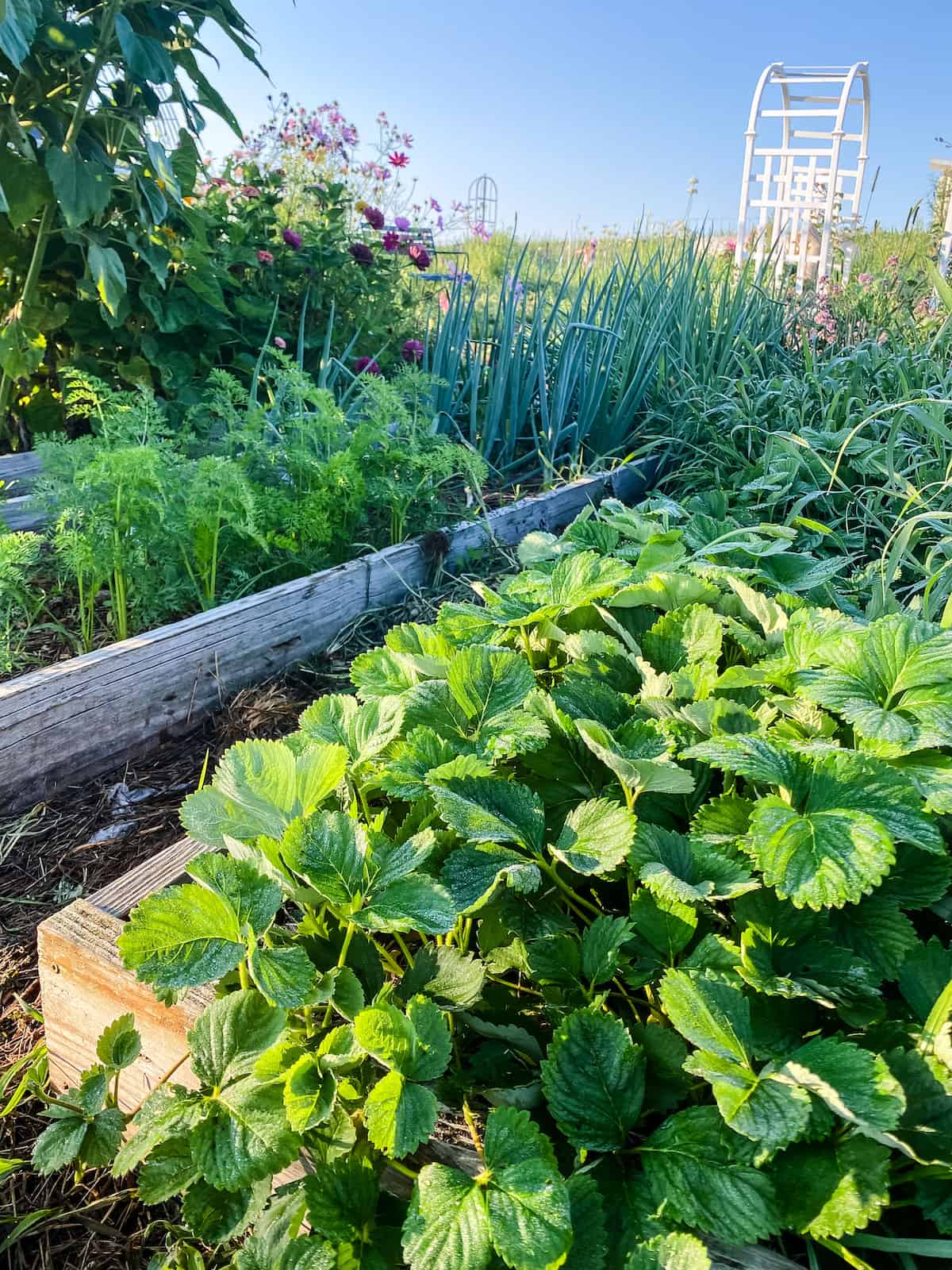
Choose Your Best Location
Again, this may take a bit of research. But it will be helpful to know what the sun requirements are for each variety of vegetable that you’re planting.
Begin by observing the sun patterns of your available space. If you’re limited on yard space, get creative. Utilize all available space for maximum impact!
Use your back deck, grow in containers, or vertically. My very first vegetable garden was on my apartment balcony before I got married.
On that balcony, I grew tomatoes, peppers, and herbs. It was there that I started to desire a natural homesteading life.
Where there’s a will, there’s a way!
Also be sure that you have an available water source nearby. You don’t want to plan out your garden beds and not have easy access to water.
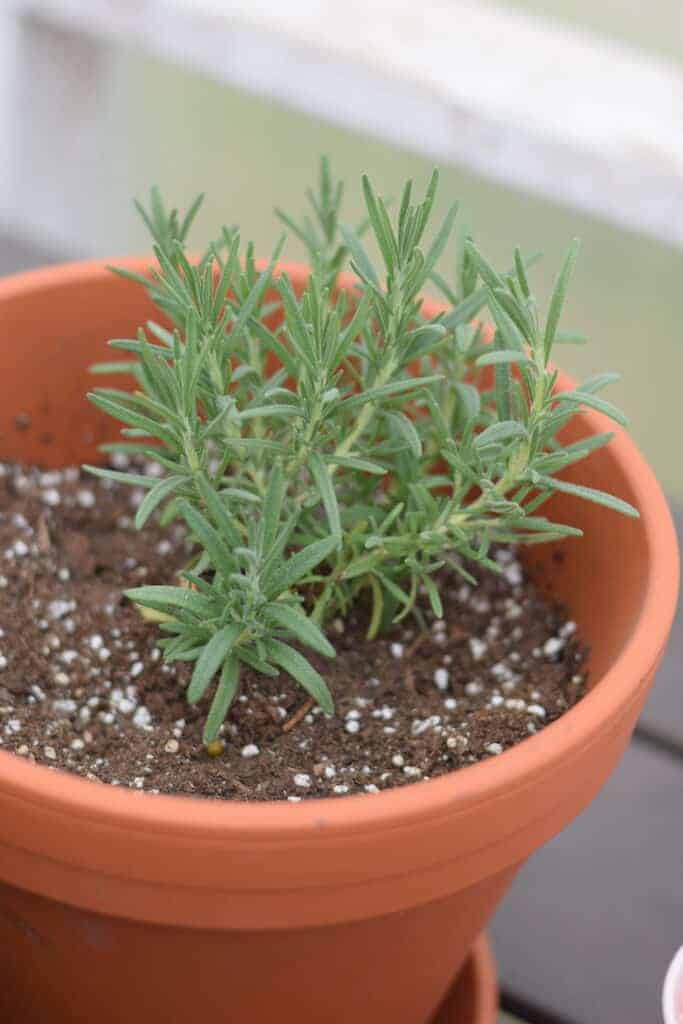
Learn the basics & benefits of companion planting in the garden to increase the quality and abundance of your crop.
Give Yourself Grace
A very easy and common trap is comparison. In a world of social media, it is so easy to want the Instagram perfect garden.
But life is busy and messy. It also takes many years for a garden to develop properly.
I think this is a really important lesson for when vegetable gardening for beginners. And also for experienced gardeners too!
A few years ago we had to start every single homestead process over. Completely from scratch. We just moved into a new home build on the family ranch.
And so we spent a couple of years of converting an old cattle pasture into a garden.
Other years, I have been pregnant or raising newborns & small children during the peak of garden season.
I still wanted a garden, so I did what I could, within my limitations.
Gardening with transplants has been a great way for me to still grow farm fresh vegetables for my family, without added stress.
Sure, it isn’t as frugal as starting a garden from seeds. But you know what, it worked well for my season of life at that time.
What I’m getting at here, is to just do what works best for you and your family. And don’t stress over the details.
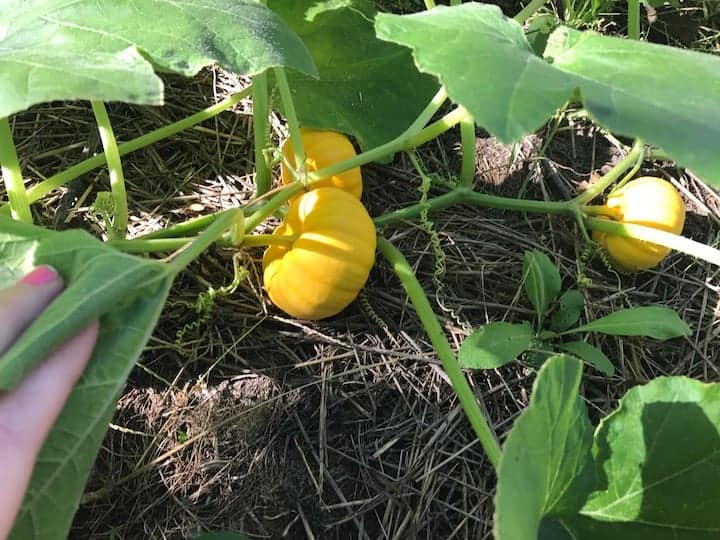
What About Watering Needs?
Before planning out your garden plot, consider your water options. How far away is your water access?
And when should you water the garden anyway?
The best time of day to water a vegetable garden is in the early morning, when it is still cool out. It helps keep the plants cool during the heat of summer.
Water at the base to allow it to reach the roots. Too much water can cause disease in plants. So only water whenever needed.
What are the Best Soil Options?
Healthy soil is super important for plants to thrive.
We live in the Sandhills of Nebraska and our soil is naturally very sandy. So amending the sandy soil is necessary for the plants to grow successfully.
With a few amendments to the soil, we learned what we could grow best in these conditions. Things like carrots, potatoes, corn, squash, zucchini, and strawberries thrive in these conditions for us.
But we also want to grow other varieties that need better growing conditions. So improving the soil is necessary for us. We use a mixture of our goat’s manure and compost along with a bit of organic mulch.
Begin with 3-4 inches of mulch and add a bit more each year.
Here are more ideas on ways to improve garden soil.
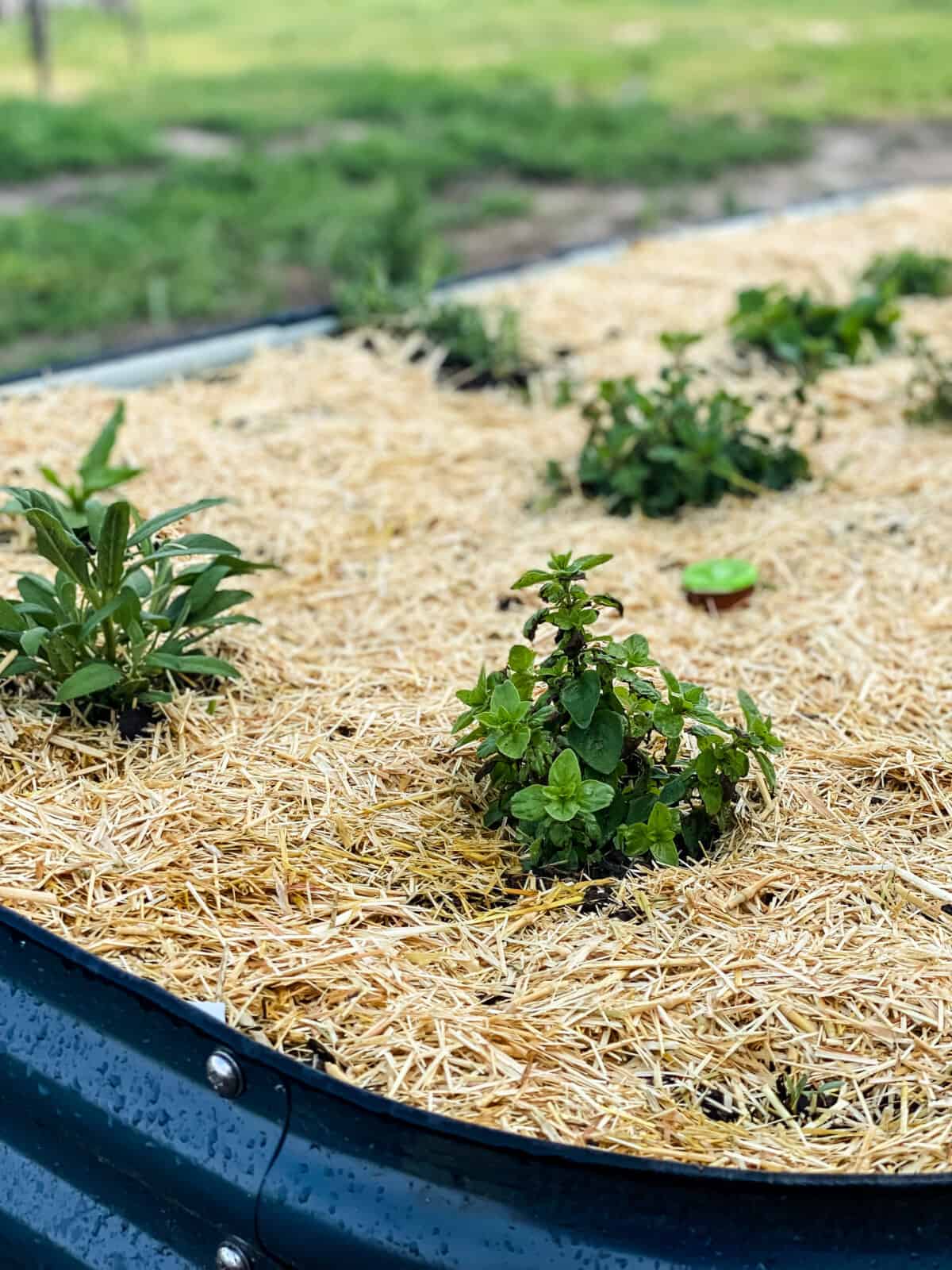
In-ground Garden vs Raised Garden Bed
What is the best option? To be honest, there are pros and cons to each of these so I would say that it is situational.
For me personally, we’ve moved from in ground garden to raised bed gardening for a variety of reasons: we are converting an old cattle pasture to a garden so it was full of grass and weeds, I’m getting older and have a few auto-immune diseases which makes raised bed gardening easier for me to maintain, overall raised bed growing saves me time and energy.
Both in-ground gardens and raised garden beds have their own set of advantages and disadvantages. The choice between them often depends on factors such as space, soil quality, accessibility, and personal preferences. Here are some pros and cons for each:
In-Ground Gardens:
Pros:
- Natural Soil Interaction: In-ground gardens allow plants to establish their roots directly in the native soil, providing a more natural environment.
- Cost: Generally, in-ground gardens are less expensive to set up since they don’t require additional materials like lumber for framing.
- Better Heat Regulation: In-ground beds may have better temperature regulation, as the soil is in direct contact with the ground, benefiting from its insulating properties.
- Space: In-ground gardens can be more suitable for larger gardening spaces, where the cost of building raised beds may be prohibitive.
Cons:
- Weed Control: In-ground gardens may require more effort in controlling weeds since they can easily encroach on the planting area.
- Drainage Issues: Poor drainage can be a problem, especially in clay-heavy soils. Water may accumulate and lead to root rot or other issues.
- Accessibility: In-ground gardens can be harder to access, particularly for individuals with mobility issues, as they often require more bending and kneeling.
Raised Garden Beds:
Pros:
- Controlled Soil Quality: Raised beds allow for better control over soil quality, which can be especially beneficial in areas with poor native soil.
- Easier on Back and Knees: Raised beds are more accessible, reducing the need for bending and kneeling. This makes gardening more comfortable, particularly for older individuals or those with physical limitations.
- Improved Drainage: Raised beds generally have better drainage, which can prevent waterlogging and root diseases.
- Warmer Soil: The soil in raised beds tends to warm up faster in the spring, providing an extended growing season.
Cons:
- Initial Cost: Raised beds can be more expensive to set up initially, requiring materials such as lumber or composite materials for construction.
- Limited Root Depth: Some plants with deep root systems may be constrained in raised beds, limiting their growth potential.
- Maintenance: Raised beds may require more maintenance, including replenishing soil and dealing with potential deterioration of the bed materials over time.
Ultimately, the decision between in-ground gardens and raised beds depends on your specific needs, preferences, and the conditions of your gardening space. Some gardeners even use a combination of both methods based on the types of plants they want to grow and the characteristics of their environment.
Favorite Raised Bed Posts
Here’s a few of our favorite related recipes that we think you’ll love too!
- raised bed cut flower garden
- summer raised bed garden tour
- benefits of raised beds
- VEGEGA raised bed review
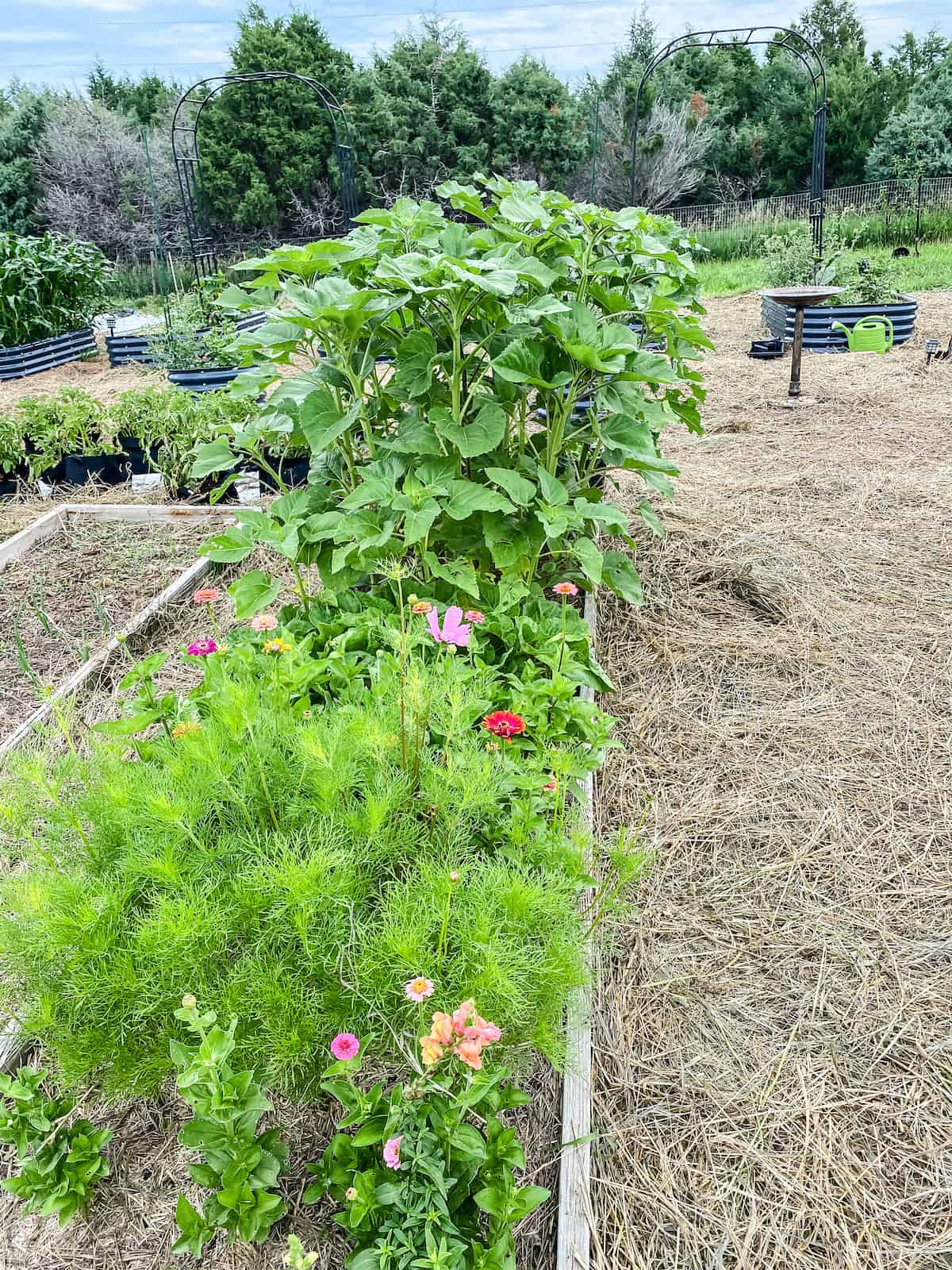


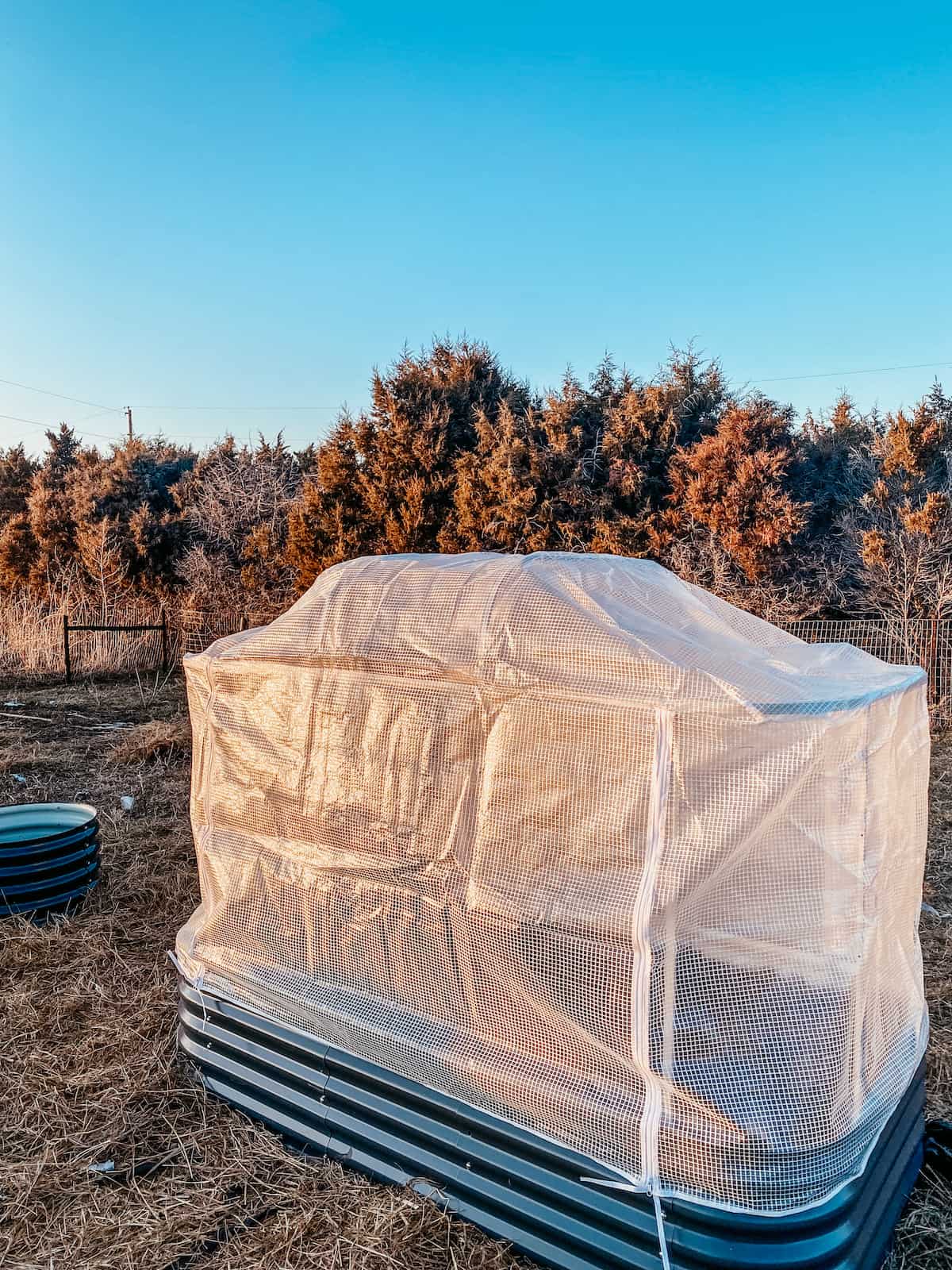
Final Thoughts on Vegetable Gardening for Beginners
When starting a new garden, it is easy to get overwhelmed. Keep these tips in mind for getting the basics down.
And keep it simple.
Another great recommendation is to keep a garden journal. I only started doing this for the last couple of gardening seasons.
And I wish that I thought about doing it much sooner! It is so great to review the previous year’s notes and recall the things that worked or didn’t work well.
Which is super helpful for planning out the garden each year.
With these simple beginner gardener tips, you can start growing more of your own vegetables at home!


